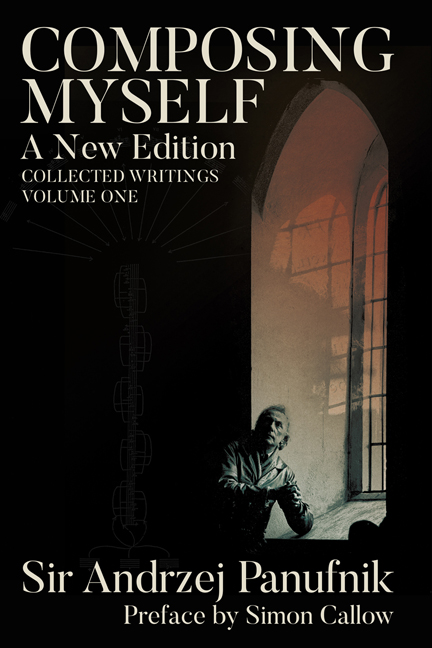Summary
One's education – one's real education – comes to one much more frequently in the byways than in the highways. In my late teens I discovered so much that has mattered to me musically in a little shop which rejoiced in the defiantly arch name of Orchesography in Cecil Court, off the Charing Cross Road in the West End of London. It sold rarefied remaindered LP records at knock-down prices and was run by a laconic but arcanely knowledgeable New Zealander called John who thoughtfully pushed his latest discoveries my way. He was very smart: I was never disappointed by the stuff he laid on for me. ‘Got something for you’, he’d say, when I came into the shop, or ‘Might like this’. On one such day the thing he thought I might like had a very striking sleeve, a stylised landscape in shades of milky brown; the name of the composer, quite unknown to me, was unpronounceable. Even John didn't attempt it. Andrzej Panufnik, the cover said. ‘Tonal?’ I asked, warily. ‘Oh, yes.’ ‘Weird?’ ‘No.’ It was called Sinfonia Sacra. ‘Catholic?’ ‘Probably. Polish, anyway.’ He played a track. Answering festive fanfares, out of which, completely unexpectedly, hushed strings emerged like a blessing. It was oddly compelling. I was caught: I had to know what the story of this music was. I put it like that because there was something about the music that had a powerful narrative drive. This man was telling me something about his life: it bespoke deep experience.
When I got home and listened further, my fascination and astonishment grew. This was like no music I had ever heard. The organisation of the piece was initially bewildering: three Visions and a Hymn? The two subsequent Visions – a spell-bound Larghetto and then what was in effect a percussion concerto – were followed by a sustained and increasingly ecstatic final slow movement which had the intensity and rapture of the equivalent movement in Mahler's Third Symphony but bore no resemblance whatever to Mahler, any more than any of the other movements resembled the music of any other composer. And yet it all hung together. More than that: it had a taut coherence about it that defied analysis. There was something inevitable about the piece: the story it told had an urgency that demanded attention.
- Type
- Chapter
- Information
- Composing Myselfand Other Texts, pp. 11 - 14Publisher: Boydell & BrewerPrint publication year: 2023

